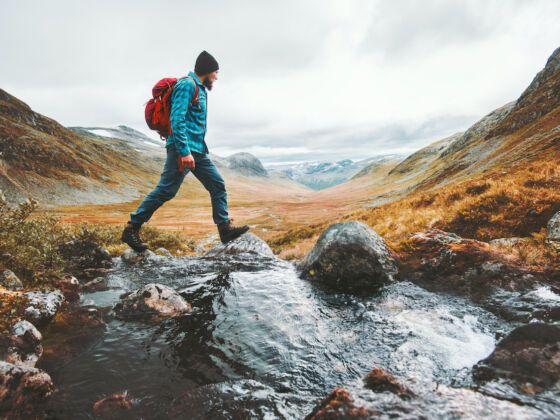What you’ll need
- A trowel, small shovel, or ice axe
- Toilet paper and plastic bag (or alternative wiping method)
- Hand sanitizer / soap
Finding the right spot
Locate a place far (at least 200ft / 60m) from any natural water source, be it river, lake, or ocean. Defecating into water will contaminate it — especially bad if this is where you’re getting your drinking water from.
If you’re traveling on a trail, move a hundred meters or so to either side so as not to leave any surprises behind for other hikers.
